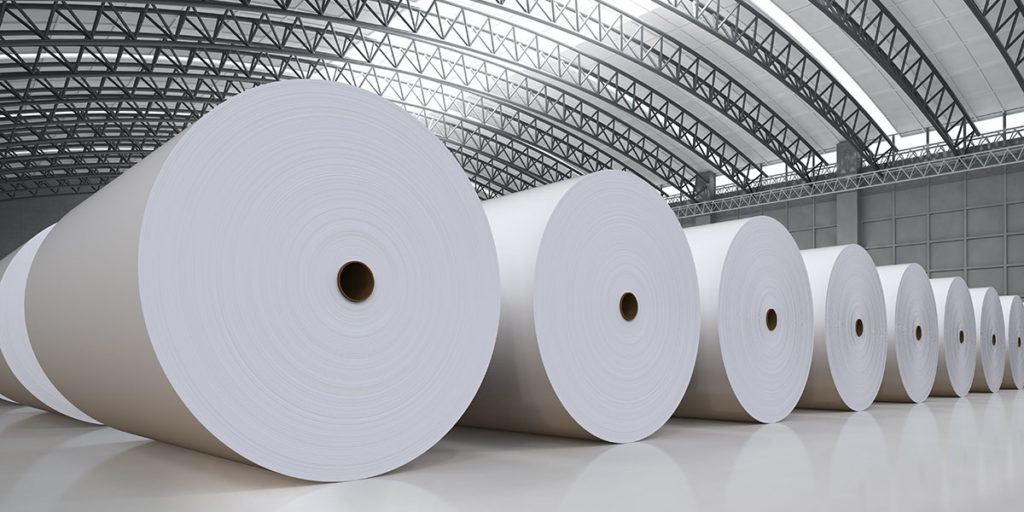4 Best Practices for Overcoming Paper Shortages

As you are sure to have noticed, there is an industrywide shortage of paper. This is a challenge facing businesses and marketers from Boston to Los Angeles. The shortage is not just affecting paper for direct mail and commercial printing services, it’s affecting everything from envelopes to wide-format signage. There is an end in sight, but experts say it probably won’t be until the end of this year. In the meantime, there are several steps and best practices you can take to ensure your most important 2022 projects are executed and on time.
First, let’s start by answering the question, “why is there a shortage of paper?” As in any large industry, it’s complicated. At the start of the pandemic, businesses hunkered down and the demand for paper slowed. Events stopped. Conferences were put on hold. Businesses temporarily shut down and companies slowed their marketing programs. Paper mills reacted by slowing production and using up existing inventories. Warehouse supplies dwindled. Then some paper mills began to close.
As the economy has ramped back up again, demand for paper has skyrocketed. However, turning on the engines of the paper industry takes time. Meanwhile, transportation costs have gone up. Pulp prices have also increased. Paper coming from overseas is getting caught in the new challenges facing international shipping. To manage the situation as best they can, paper suppliers are rationing paper, a situation many of us are already familiar with (remember rationing of toilet paper and cleaning products by retailers at the start of the pandemic in 2020?).
This global supply shortage is affecting everyone. No printing company, local or national has been untouched by this supply vs. demand shortage. (That includes Fineline.) The average price of paper has gone up as much as 16% since last year. However, this doesn’t mean that your print projects need to be put on hold or cancelled. Keeping your print projects running smoothly and on time will simply take a little foresight, flexibility and creativity.
Here are some ideas for keeping things on track.
- Be flexible. Paper is available. It just might not be the exact brightness, finish, or weight that you initially specified. Instead of a 98 brightness, for example, will a 95 brightness do? Or instead of a silk finish paper for that print on demand project, would a gloss work instead?
- Consider new sizes or formats. Perhaps you are used to printing that variable data flyer on a 11×17” tri-folded sheet. Consider using a smaller or larger size instead. Or instead of your usual sales letter, try a postcard. Use these paper supply fluctuations as opportunities to be creative and try new approaches. You never know — you might end up loving the results.
- Plan, plan & plan ahead. Give more lead time on your commercial printing projects to give us time to find paper that will work for you. If we can’t get what you originally requested, you will have the breathing room to make adjustments in layout and design if necessary.
- Understand that pricing changes quickly. Because the availability of paper is so volatile, pricing changes frequently. It’s not unusual to see paper pricing guaranteed only for 24 hours. If it takes your team a few days to make final decisions about your project, the estimate might change during that time. At Fineline Printing Group, we currently honor our estimated pricing for 7 days on all of our printing and mailing services.
- Be willing to adjust sheet sizing. You might be used to saving money by printing multiple “up” on a sheet on one of our larger-format presses. If those sheets aren’t available, you might still be able to get your project running one-or two-up on smaller format machine. Your project will get out, but this will impact the price of the paper and the manufacturing cost.
These are certainly challenging times, but they won’t last forever. Plan further ahead. Be flexible, and be ready to pivot, we’ll all get through it together.
If you need help managing your commercial printing services or large format projects, our team of experts will help you every step of the way.
About the Author
Lisa Young, Fineline’s Chief Operating Officer has 20+ years experience in commercial print, marketing and fulfillment. She holds a BA degree from Butler University and is a Six Sigma Green Belt. When Lisa isn’t at work leading the teams that serve our clients, she is actively involved in her church and enjoys road biking and travel.

